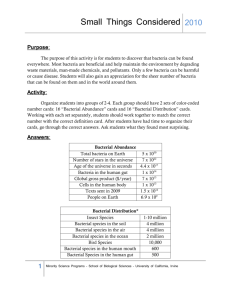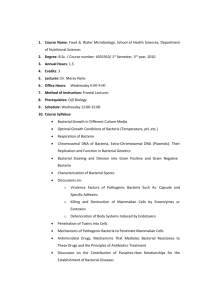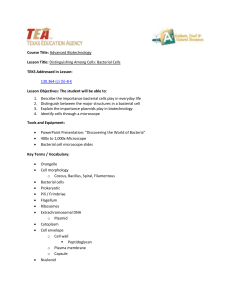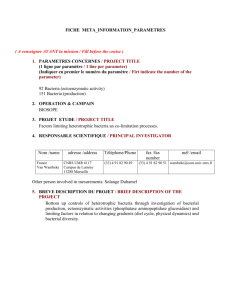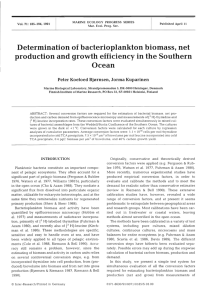SES: Methods in Microbial Ecology
advertisement
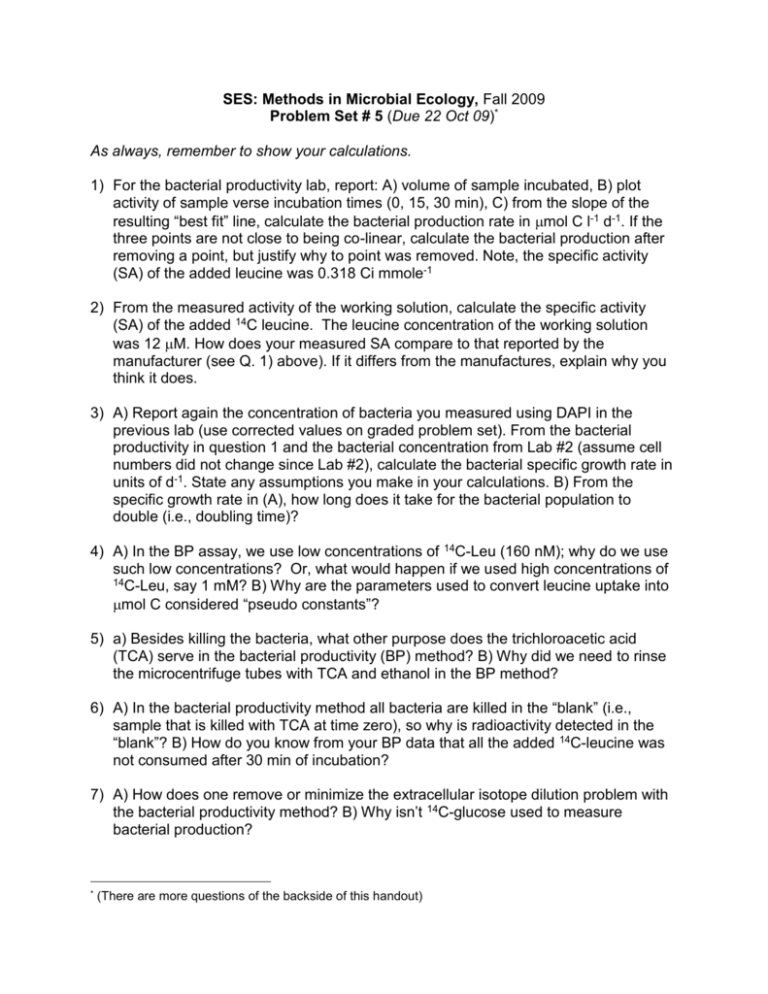
SES: Methods in Microbial Ecology, Fall 2009 Problem Set # 5 (Due 22 Oct 09)* As always, remember to show your calculations. 1) For the bacterial productivity lab, report: A) volume of sample incubated, B) plot activity of sample verse incubation times (0, 15, 30 min), C) from the slope of the resulting “best fit” line, calculate the bacterial production rate in mol C l-1 d-1. If the three points are not close to being co-linear, calculate the bacterial production after removing a point, but justify why to point was removed. Note, the specific activity (SA) of the added leucine was 0.318 Ci mmole-1 2) From the measured activity of the working solution, calculate the specific activity (SA) of the added 14C leucine. The leucine concentration of the working solution was 12 M. How does your measured SA compare to that reported by the manufacturer (see Q. 1) above). If it differs from the manufactures, explain why you think it does. 3) A) Report again the concentration of bacteria you measured using DAPI in the previous lab (use corrected values on graded problem set). From the bacterial productivity in question 1 and the bacterial concentration from Lab #2 (assume cell numbers did not change since Lab #2), calculate the bacterial specific growth rate in units of d-1. State any assumptions you make in your calculations. B) From the specific growth rate in (A), how long does it take for the bacterial population to double (i.e., doubling time)? 4) A) In the BP assay, we use low concentrations of 14C-Leu (160 nM); why do we use such low concentrations? Or, what would happen if we used high concentrations of 14C-Leu, say 1 mM? B) Why are the parameters used to convert leucine uptake into mol C considered “pseudo constants”? 5) a) Besides killing the bacteria, what other purpose does the trichloroacetic acid (TCA) serve in the bacterial productivity (BP) method? B) Why did we need to rinse the microcentrifuge tubes with TCA and ethanol in the BP method? 6) A) In the bacterial productivity method all bacteria are killed in the “blank” (i.e., sample that is killed with TCA at time zero), so why is radioactivity detected in the “blank”? B) How do you know from your BP data that all the added 14C-leucine was not consumed after 30 min of incubation? 7) A) How does one remove or minimize the extracellular isotope dilution problem with the bacterial productivity method? B) Why isn’t 14C-glucose used to measure bacterial production? * (There are more questions of the backside of this handout) 8) a) What was the intracellular dilution factor for leucine that Simon and Azam measured? b) Briefly state the two ways Simon and Azam measured the intracellular isotope dilution. 9) During the BP assay incubation, bacteria are being eaten by bacterial predators, such as nanoflagellates and ciliates. Do you think the assay may underestimate the true BP because of this predation? Please explain your answer. 10) Calculate the specific growth rate (in d-1) of a bacterial culture that increases in population from 1.0 106 cells ml-1 to 3.0 106 cells ml-1 in 5.5 days. Assume exponential growth and that bacteria are not being preyed on.



